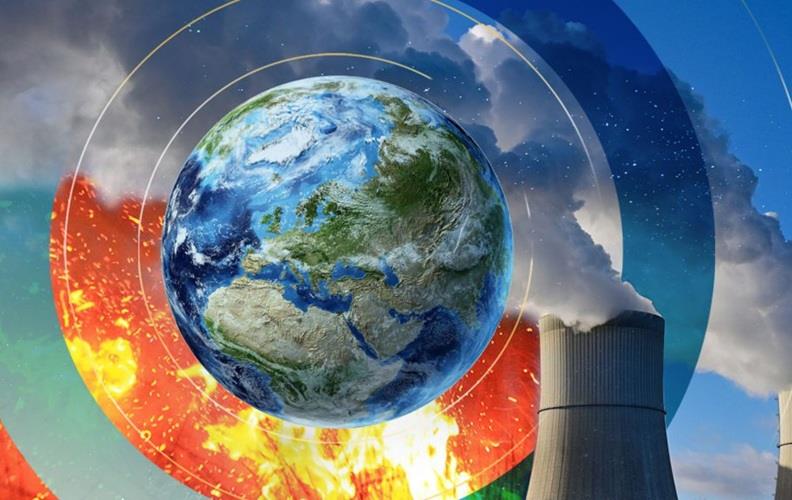
Nitrous oxide emissions: A growing climate threat
13/06/2024TN&MTRecent reports have highlighted a significant rise in nitrous oxide (N₂O) emissions, posing a substantial threat to global climate efforts. Nitrous oxide, a greenhouse gas 300 times more potent than carbon dioxide (CO₂), is increasingly being emitted due to human activities, particularly in agriculture.
Surge in nitrous oxide emissions
The surge in nitrous oxide emissions is primarily attributed to agricultural practices. A study titled "Global Nitrous Oxide Budget 2020," published in the journal Nature in October 2020, reveals that nitrous oxide emissions have increased by 40% over the past four decades. These emissions reached a concentration of 336 parts per billion in 2022, exceeding previous predictions and threatening the goal of limiting global warming as outlined in the Paris Agreement.

Global N2O budget during 2010–2019
Agriculture is identified as the major driver behind the rise in N₂O emissions. The use of synthetic fertilizers and manure management are primary contributors. These fertilizers release N₂O as a byproduct, which accumulates in the atmosphere and significantly enhances the greenhouse effect. According to the "Global Nitrous Oxide Budget 2024," published in the journal Earth System Science Data by researchers from Boston College, agricultural production accounted for 74% of human-driven N₂O emissions in the 2010s, attributed primarily to the use of commercial fertilizers and animal waste on croplands.
In an era when greenhouse gas emissions must decline to reduce global warming, in 2020 and 2021 nitrous oxide flowed into the atmosphere at a faster rate than at any other time in history. On Earth, excess nitrogen contributes to soil, water, and air pollution. In the atmosphere, it depletes the ozone layer and exacerbates climate change. Emissions from agriculture reached 8 million metric tons in 2020, a 67% increase from the 4.8 million metric tons released in 1980. “Nitrous oxide emissions from human activities must decline in order to limit global temperature rise to 2°C as established by the Paris Agreement,” said the report’s lead author, Hanqin Tian, the Schiller Institute Professor of Global Sustainability at Boston College, “Reducing nitrous oxide emissions is the only solution since at this point no technologies exist that can remove nitrous oxide from the atmosphere”. The top countries contributing to N₂O emissions include China, India, the United States, Brazil, and Russia.
The impact of rising nitrous oxide levels on climate change is profound. As a potent greenhouse gas, N₂O contributes to global warming and the depletion of the ozone layer. Its persistence in the atmosphere for over a century amplifies its long-term climatic effects. In 2020 and 2021, nitrous oxide flowed into the atmosphere at a faster rate than at any other time in history, exacerbating climate change and depleting the ozone layer. The current increase in N₂O emissions undermines global efforts to mitigate climate change and achieve the targets set by international agreements such as the Paris Accord. According to Hanqin Tian, reducing nitrous oxide emissions is crucial since no existing technology can remove N₂O from the atmosphere.
Mitigation strategies
To address this issue, several mitigation strategies are being proposed. Improving nitrogen use efficiency in agriculture is crucial. This involves optimizing fertilizer application to reduce excess use and adopting alternative farming practices such as crop rotation and organic farming. Additionally, advancements in technology, such as the development of nitrification inhibitors, can help reduce N₂O emissions from soils. Policymaking and international cooperation are also essential to enforce regulations and promote sustainable agricultural practices.

Agriculture is identified as the major driver behind the rise in N₂O emissions
The Global Carbon Project, established in 2001, plays a crucial role in analyzing the impact of human activities on greenhouse gas emissions. It provides comprehensive global budgets for the three dominant greenhouse gases: carbon dioxide, methane, and nitrous oxide. The project's findings emphasize the need for improved agricultural practices, including better management of nitrogen fertilizers and animal manure, to address and reduce greenhouse gas emissions and water pollution. Some countries have implemented successful policies and practices to reduce nitrous oxide emissions. For instance, China and several European nations have seen a slowdown in emissions due to these efforts.
“While there have been some successful nitrogen reduction initiatives in different regions, we found an acceleration in the rate of nitrous oxide accumulation in the atmosphere in this decade”, said Global Carbon Project Executive Director Josep Canadell, who is also a research scientist at CSIRO, Australia’s national science agency. “The growth rates of atmospheric nitrous oxide in 2020 and 2021 were higher than any previous observed year and more than 30 percent higher than the average rate of increase in the previous decade”. This underscores the urgent need for more frequent assessments and targeted mitigation efforts in high-emission regions.
The rise in nitrous oxide emissions presents a significant challenge to global climate change mitigation efforts. Addressing this issue requires a multifaceted approach involving improved agricultural practices, technological innovation, and strong policy measures. Without concerted efforts, the growing levels of N₂O will continue to pose a serious threat to the environment and global climate stability.
Ngoc Huyen (Global Carbon Project)
















